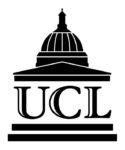 Professor Janusz Jankowski – University College London
Professor Janusz Jankowski – University College London
AspECT Excel Trial – New Project in preparation 2019 (combined Feasibility phase and main follow up study)
Background.
The AspECT Trial successfully followed up 2557 patients with Barrett’s oesophagus (BM) for a mean of ~9 years, showing that high dose proton pump inhibitors (PPI) significantly reduced the combination of all-cause mortality, high grade dysplasia (HGD) and oesophageal adenocarcinoma (BA). High dose PPI appeared remarkably safe, despite reports from several large cohort studies of increased vascular events and other proposed complications. The data also suggested that aspirin reduced these endpoints although this was only statistically significant if non-steroidal anti-inflammatory drug users were excluded. Interestingly, the combination of high dose PPI and aspirin appears more effective than either alone. Neither agent showed an effect in preventing BA and the main decrease in endpoints were in non-cardiac death with PPI and HGD with aspirin (and to a lesser extent PPI too). In this regard since these agents reduce the precursor lesions, HGD, longer follow up would be expected to show a decrease BA. AspECT is one of the few cancer prevention trials in the world to show a synergistic combination between two agents. The Women’s AspECT study (WASP) embedded in AspECT trial confirmed that when comparing the endpoints between the sexes, men indeed have a higher incidence all of the endpoints of HGD, BA and premature death, including when all the confounding variables are considered; the effect of high dose PPI was very clear in men but less so in women. However, since fewer women were recruited, additional follow up will allow us to address this issue too as the power will increase by at least 65%.
AspECT EXceL is Unique and can address Key gaps in the knowledge base.
Three recent large aspirin trials have also recently reported; A Study of Cardiovascular Events in Diabetes (ASCEND), Aspirin to Reduce Risk of Initial Vascular Events (ARRIVE) and ASPirin in Reducing Events in the Elderly (ASPREE) (22-24). There is evidence that without acid suppression complications can be high and that aspirin given after 70 years of age might be disadvantageous to many lower risk cohorts. These studies also indicate that follow up of the AspECT cohort in AspECT EXceL is needed even more now, as all the other large studies still can’t define either the optimum age to start aspirin therapy, the optimal dose or duration of therapy, especially in BM patients. Indeed AspECT, and the proposed AspECT EXceL, are the only trials to show a net benefit of aspirin use because the modest benefits, at a number needed to treat of 1 in 43, were not offset by serious complications especially gastrointestinal bleeding. In fact less than 1% of trial patients had serious side effects and those that could be attributable to bleeding in the GI tract were not more frequent than controls, probably because all patients were on proton pump inhibitors. AspECT is unique in this regard. This is despite the fact that patients in AspECT were getting 3 times the dose of aspirin compared with these large trials, 300mg vs. 100mg. In addition, the combination of aspirin and proton pump inhibitors were synergistic leading to the biggest decrease in the composite endpoints. AspECT may also be unique in other ways, as there is other data that suggests that the body mass index is positively associated with aspirin responsiveness, and furthermore that tailoring the dose of aspirin to body weight can optimise the benefit/risk ratio (25). In this regard we have already accurate waist and height, hip/waist ratios measurements, as well as 200k-600k genotypes of obesogenic traits on all patients. Furthermore, all patients in AspECT donated blood samples at the start and during the study, and many also donated samples from diseased tissue as well as matched controls of squamous tissue and gastric tissue on either side. Therefore AspECT is unique in that it can address the questions of prognostic and predictive biomarkers.
Rationale.
The rationale is fivefold.
- Increasing power of the study. The three main drivers of increasing power in any studies is by increasing sample size, increasing endpoint incidence by selecting higher risk groups or by increasing follow up to accrue more events. The AspECT cohort is aging and so will by default increase into the age range where events will be increased for BA (late 60’s for men and late 70’s for women). There was also insufficient follow up in AspECT, in retrospect, to prove definitively that either agent prevented BA or indeed any other cancer, and so more robust evidence is needed to clarify the efficacy of this approach. This is because it is thought that alteration of the cancer pathophysiology by chemopreventive agents can take a decade. Evidence in support of this comes from other recent trials suggesting that the effect of Aspirin on cancer may take a minimum of 5-10 years to become apparent biologically, 10+ years to be clinically significant, and effects may outlast the period of Aspirin treatment. The aim of AspECT EXceL is to follow up patients for an additional 6 years, 7 years to include a feasibility 1 year recruitment, (+6 months set up at the beginning) so that the 95% CI of any effect can be more tightly defined.
- Additional Approach to Statistical Analyses; Intention to treat vs. per-protocol analyses. Both were reported in the Lancet but we favoured the ITT analyses as that is standard practice but not always optimal for such longer-term studies. While analyses on an intention to treat basis will be useful to assess long-term effect and benefits of aspirin and proton pump therapy, it will also be as interesting and perhaps more clinically valuable to assess the cohort as therapy changes post-randomisation. Therefore conducting a per-protocol analyses of risk as therapy changes following the end of the randomised phase of the study will be critical to independently validating effects attributable to actual therapy. This work has already been performed by the team including screening where non-compliance is mostly early in the trial (26).
We will also analyse causes for cancer and non-cancer deaths. As intimated in BM patients pneumonia causes the majority of deaths (x3-4) those caused by cancer. The interaction between high dose PPI and aspirin will be assessed in detail.
- Collection of endpoint data. We will be able to update endpoints and progression some of which will not be reported from any other sources, this is especially the case for high-grade dysplasia (HGD). If we rely only on central certification through hospital based statistics and death certification we will miss at least a third of this class of events. Interestingly because HGD is an intervention step in modern pathways it is increasingly likely that many potential cancers will present at this stage if BM patients are in surveillance progammes. Moreover the data from the AspECT trial so far show that it is at the HGD step that aspirin and to a lesser extent PPI therapy seems to exert maximal effect. With longer follow up an effect on BA might become evident.
- Compliance of patients.We do not have reliable data for longer-term compliance for aspirin and PPI therapy. AspECT is one of the best examples of long-term detailed follow-up in any clinical trial. However, it seems plausible that compliance needs to last at least 10-15 years to show an appreciable clinical effect as opposed the statistical/biological effect. This is because confounding variables can interfere with the risks in populations followed up. AspECT EXceL offers an opportunity to analyse this from ‘real world data’ in a cancer prevention situation ensuring that any potential confounders are monitored, analysed and reported.
- Prognostic and Predictive risk factors and biomarkers. Currently the data archives may allow better composite clinico-pathological risk factors to be calculated. Specifically we know that the risks of certain parameters including age, length of Barrett’s, sex, BMI, presence of previous dysplasia and use of certain medications are independently prognostic and may be additive. Therefore this may allow better selection of patients for both aspirin chemoprevention and escalation to higher-level intervention such as more frequent surveillance strategies with or without new technology or endotherapy such as mucosal ablation in high-risk individuals. In addition, we may be able to select better subgroups for aspirin and proton pump inhibitors combination therapy. In this regard we know that the biome is altered with use of PPIs and in reflux patients. This phenomena could be addressed by linking outcomes to the stored samples. It has already been shown that, weighted score systems for BM at risk can be developed (27). AspECT EXceL will be instrumental in validating these studies given the invaluable longitudinal follow up.
- Low cost solution to Trial Co-ordination and collaboration between Aspirin Experts. Our Trial Unit is the UKCRC accredited University College London (UCL) Comprehensive Clinical Trials Unit (CCTU UCL) who have experience in undertaking complex trials multicentre trials. Moreover they now have expert statistical support including one of the previous members of the AspECT trial team. Sharon Love and Jack Cuzick will also have input of the analyses. This will help NICE get the detail they need to consider the wider issue of chemoprevention for the wider communities in the UK.
Aims.
- To see if aspirin AND PPIs effectiveness increases long term (we found both worked and were synergistic).
- To see if aspirin effectiveness increases as predicted.
- To see if any complications from PPI occur over a longer period of follow up.
AspECT Excel Trial Unit
CCTU, University College London (Opens ~ spring 2022).


